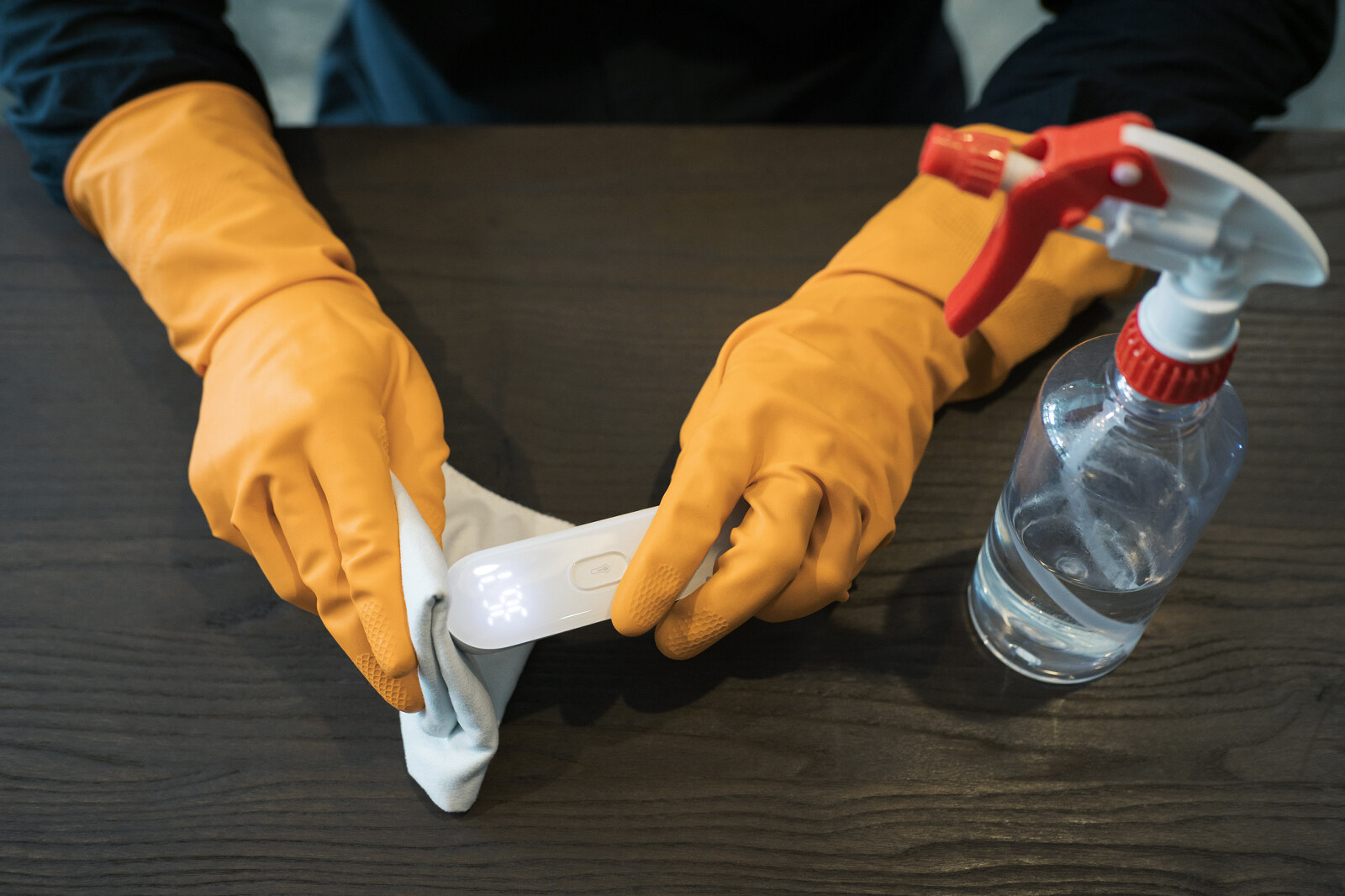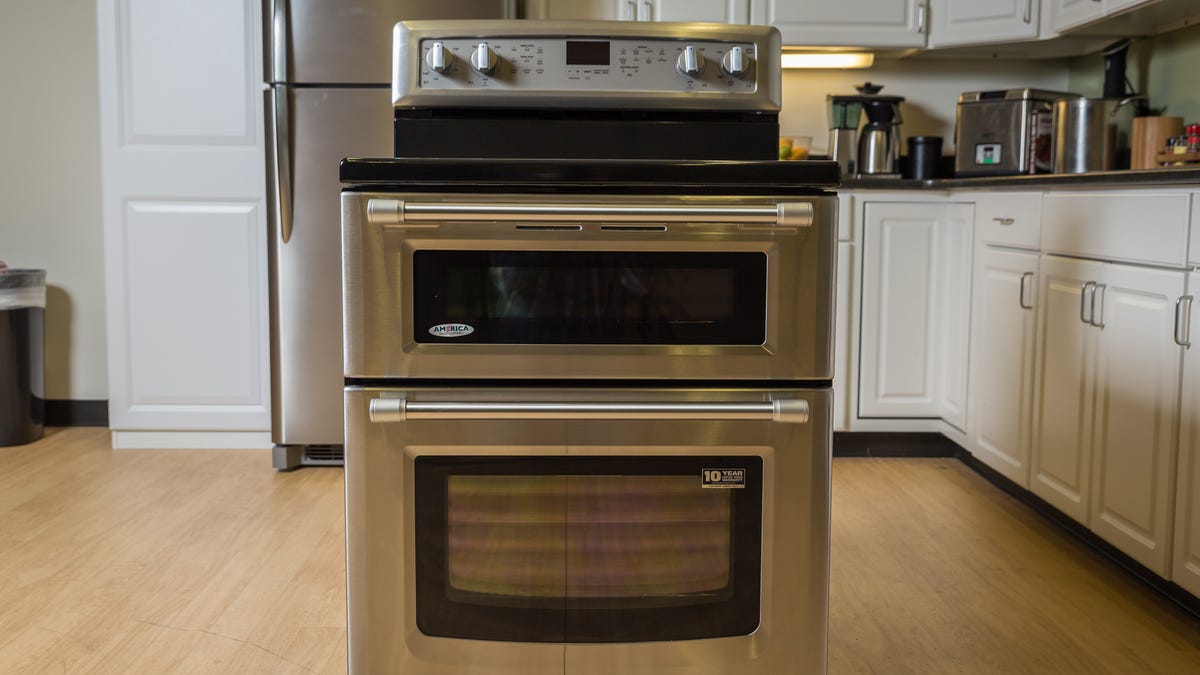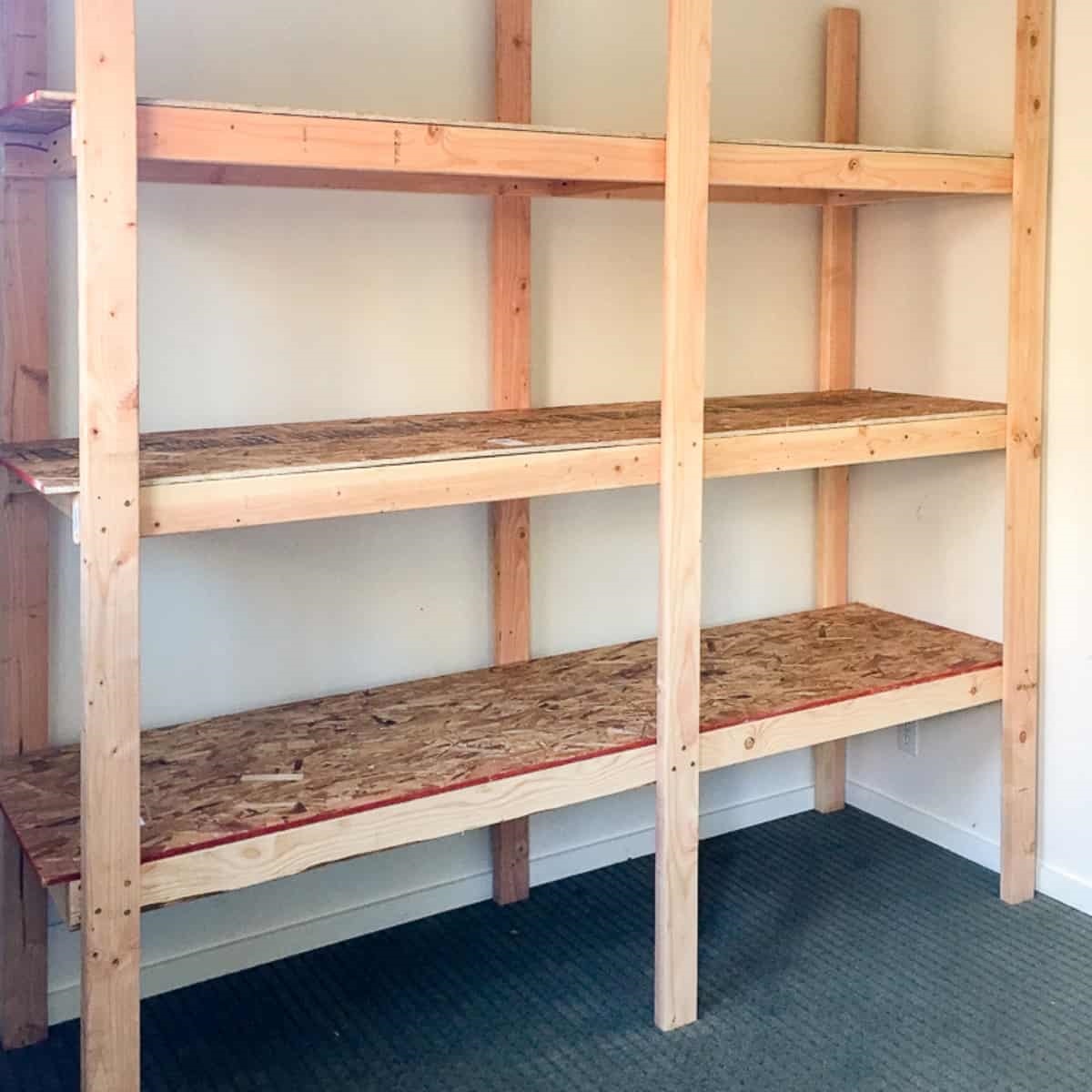Home>Storage Ideas>Kitchen Storage>Clean Your Thermometer After Each Use—Here’s How To Do It Safely


Kitchen Storage
Clean Your Thermometer After Each Use—Here’s How To Do It Safely
Modified: January 21, 2024
Keep your kitchen safe and clean with our easy guide on how to properly clean your thermometer after each use. Learn the best practices for maintaining hygiene in your cooking space.
(Many of the links in this article redirect to a specific reviewed product. Your purchase of these products through affiliate links helps to generate commission for Storables.com, at no extra cost. Learn more)
Introduction
Keeping your kitchen organized and clutter-free is essential for efficient meal preparation and a stress-free cooking experience. One area of the kitchen that often gets overlooked when it comes to organization is kitchen storage. With the right storage ideas, you can maximize the available space and keep your kitchen utensils, gadgets, and ingredients neatly organized and easily accessible.
Whether you have a small kitchen or a spacious one, there are numerous kitchen storage ideas that can help you make the most of your space. From clever cabinet solutions to creative drawer organizers, there is a solution for every kitchen storage challenge. In this comprehensive guide, we will explore various kitchen storage ideas that will inspire you and help you declutter your kitchen.
One of the most essential aspects of kitchen storage is the proper organization of your cooking utensils, pots, and pans. By organizing them effectively, you not only save space but also make your cooking process more efficient. For example, having a designated drawer or rack for your pots and pans can save you from rummaging through a crowded cabinet every time you need to cook.
Another important aspect of kitchen storage is keeping your food items well-organized and easily accessible. This is particularly crucial if you have a pantry or a larger food storage area. By implementing efficient storage systems such as labeled containers, stackable bins, and adjustable shelving, you can easily keep track of your ingredients and ensure that nothing goes to waste.
In addition to optimizing the storage of your kitchen utensils and food items, it is also important to consider the storage of your cleaning supplies. Having a designated cabinet or storage area for your cleaning products ensures that they are easily accessible when you need them, making your kitchen cleaning routine a breeze.
Furthermore, it is also important to consider the aesthetics of your kitchen storage. By incorporating stylish storage solutions such as open shelving, decorative baskets, and glass jars, you can add a touch of visual appeal to your kitchen while still maintaining functionality.
Throughout this guide, we will delve into specific kitchen storage ideas for various areas of your kitchen, including cabinets, drawers, pantry, and countertop. Whether you are looking for ways to organize your spices, pots and pans, baking essentials, or coffee station, we have got you covered.
So, if you are ready to transform your kitchen into an organized and efficient space, let’s dive into the world of kitchen storage ideas. Get ready to be inspired and empowered to create a kitchen that not only looks great but also functions flawlessly.
Key Takeaways:
- Properly cleaning your thermometer after each use is crucial to prevent cross-contamination, maintain accuracy, and promote food safety, ensuring delicious and safe culinary results.
- In addition to cleaning, regularly calibrating, inspecting, and storing your thermometer properly will help maintain its accuracy and longevity, ensuring reliable temperature readings for years to come.
Read more: How To Fix E2 Error In A Washing Machine
Why it is important to clean your thermometer after each use
A thermometer is an essential tool in the kitchen, ensuring that your food reaches the proper temperature and is safe to consume. However, it is not enough to simply use a thermometer during cooking; it is equally important to clean it thoroughly after each use. Here are the reasons why cleaning your thermometer after each use is crucial:
- Prevents cross-contamination: When you use a thermometer to check the temperature of cooked meat or other food items, it can come into contact with bacteria and pathogens present in the food. If you do not clean the thermometer properly, these contaminants can transfer to other foods, potentially causing foodborne illnesses.
- Maintains accuracy: A clean thermometer ensures accurate temperature readings. If there are any food residues or other debris on the probe, it can interfere with the accuracy of the readings. Regular cleaning ensures that your thermometer remains reliable and provides accurate temperature measurements.
- Extends the lifespan of the thermometer: Cleaning your thermometer after each use helps prevent the buildup of food residues and other substances that can damage the probe or other components over time. By maintaining proper hygiene, you can prolong the lifespan of your thermometer and ensure that it continues to function effectively.
- Eliminates odors and flavors: Certain foods, such as marinades or spices, can leave lingering odors and flavors on the thermometer probe. By cleaning it thoroughly after each use, you can prevent these odors and flavors from transferring to other dishes you might measure in the future.
- Promotes food safety: Properly cooked food is essential for preventing foodborne illnesses. By using a clean thermometer, you can ensure that your food reaches the correct internal temperature, killing any harmful bacteria or pathogens. This is particularly important for items such as poultry, ground meat, and eggs, which need to be cooked to specific temperatures to ensure safety.
Now that you understand the importance of cleaning your thermometer after each use, let’s move on to the materials you will need for proper cleaning.
Materials needed for cleaning your thermometer
Cleaning your thermometer is a simple process that requires a few basic materials. Here are the materials you will need to ensure a proper and thorough cleaning:
- Disposable probe covers: Disposable probe covers are an essential accessory for hygienic thermometer use. These covers are made of thin plastic and are designed to be placed over the thermometer probe before use. They help prevent cross-contamination by providing a barrier between the probe and the food being measured. Make sure to have an ample supply of disposable probe covers on hand for each use.
- Alcohol wipes: Alcohol wipes are an effective tool for sanitizing the thermometer after each use. They contain isopropyl alcohol, which helps kill bacteria and pathogens. Look for alcohol wipes specifically designed for sanitizing medical and cooking equipment.
- Mild soap: A mild soap or dishwashing liquid is necessary for cleaning the thermometer probe. Choose a soap that is gentle on the skin and does not contain harsh chemicals or additives.
- Water: You will need water to rinse the thermometer after cleaning. Make sure to use clean, preferably warm, water for thorough rinsing.
- Clean cloth or paper towels: A soft, clean cloth or paper towels are necessary for drying the thermometer after cleaning and rinsing. Avoid using abrasive materials or rough towels that can scratch the probe.
- Storage container: While not directly used for cleaning, a clean and safe storage container is important for keeping your thermometer protected and easily accessible. Choose a container that is specifically designed for thermometer storage or use a clean, dry container with a lid.
Having these materials ready before cleaning your thermometer will ensure a thorough and effective cleaning process. Now that you have gathered the necessary materials, let’s move on to the step-by-step process of cleaning your thermometer.
Step 1: Use disposable probe covers
Using disposable probe covers is an important step in maintaining the hygiene of your thermometer. These covers provide a protective barrier between the food being measured and the thermometer probe, preventing cross-contamination and ensuring accurate readings. Here’s how to use disposable probe covers:
- Ensure that your thermometer is in good working condition and free from any dirt or residue.
- Before taking a temperature measurement, place a disposable probe cover over the tip of the thermometer probe.
- Make sure that the probe cover fits securely and completely covers the tip of the probe.
- Hold the thermometer by the handle and insert the covered probe into the food being measured.
- Follow the instructions provided with your thermometer to get an accurate temperature reading.
- Once you have finished using the thermometer, remove the disposable probe cover by gently pulling it off the probe.
- Dispose of the used probe cover in a proper waste bin.
Using disposable probe covers not only helps maintain hygiene but also saves time on cleaning the thermometer itself. It is important to note that disposable probe covers are intended for single-use only and should be discarded after each use. Make sure to have an adequate supply of probe covers on hand to ensure you always have clean ones available.
Now that you have used a probe cover, let’s move on to the next step: wiping the thermometer with alcohol wipes.
Step 2: Wipe the thermometer with alcohol wipes
After using a disposable probe cover, the next step in cleaning your thermometer is to wipe it with alcohol wipes. Alcohol wipes are an effective tool for sanitizing the thermometer and eliminating any bacteria or pathogens that may be present. Follow these steps to properly wipe your thermometer with alcohol wipes:
- Take an alcohol wipe and remove it from the packaging.
- Hold the thermometer firmly with one hand, making sure to avoid touching the probe with your bare hands.
- Using your other hand, take the alcohol wipe and gently wipe the entire surface of the thermometer, focusing on the probe and any other areas that may have come into contact with food.
- Ensure that the alcohol wipe covers all parts of the thermometer, including the handle and buttons.
- Apply gentle pressure while wiping to ensure thorough sanitization.
- Continue wiping until the entire surface of the thermometer is clean and any visible residue or dirt is removed.
- Dispose of the used alcohol wipe in a proper waste bin.
By wiping the thermometer with alcohol wipes, you are effectively sanitizing it and eliminating any potential contaminants. The alcohol in the wipes acts as a disinfectant, killing bacteria and pathogens that may be present on the thermometer’s surface. This step is crucial for maintaining the cleanliness and hygiene of your thermometer.
Once you have completed this step, it’s time to move on to the next step: cleaning the probe with mild soap and water.
To clean your thermometer after each use, wash it with soap and warm water, then disinfect with rubbing alcohol or hydrogen peroxide. Be sure to rinse and dry thoroughly before storing.
Step 3: Clean the probe with mild soap and water
After sanitizing the thermometer with alcohol wipes, it’s time to clean the probe using mild soap and water. This step ensures that any residual food particles or debris are thoroughly removed from the surface of the thermometer, promoting hygiene and accuracy in temperature readings. Follow these steps to properly clean the probe of your thermometer:
- Fill a basin or sink with warm water.
- Add a few drops of mild dish soap to the water and mix gently to create a soapy solution.
- Unplug or remove any batteries or electrical components from the thermometer to prevent damage.
- Hold the thermometer by the handle, making sure to avoid submerging any electrical parts in water.
- Dip the probe of the thermometer into the soapy water, ensuring that the entire probe is submerged.
- Gently scrub the probe using a soft brush or sponge to remove any food particles or residue. Pay close attention to any crevices or hard-to-reach areas.
- Rinse the probe under clean running water to remove any soap residue.
- Inspect the probe to ensure that it is clean and free from any visible residue or debris.
- Pat the probe dry using a clean cloth or paper towel. Make sure to dry it thoroughly to prevent the growth of bacteria or rust.
Cleaning the probe with mild soap and water helps remove any stubborn food residue that may not have been completely eliminated by the alcohol wipes. The gentle scrubbing action and rinsing with clean water ensure that the probe is free from any contaminants.
Now that you have cleaned the probe, let’s move on to the next step: properly rinsing and drying the thermometer.
Step 4: Rinse and dry the thermometer properly
Once you have cleaned the probe of your thermometer with mild soap and water, it’s important to rinse and dry it properly to ensure that no soap residue or excess moisture remains. Follow these steps for proper rinsing and drying:
- Hold the cleaned probe under clean running water to thoroughly rinse off any soap residue. Ensure that all surfaces of the probe are rinsed.
- Gently shake the excess water off the probe, or pat it with a clean cloth or paper towel to remove the water.
- Inspect the probe to ensure that it is free from any soap residue or water droplets.
- Next, dry the entire thermometer, including the handle, with a clean cloth or paper towel. Ensure that all parts are dried thoroughly.
- For hard-to-reach areas or crevices, you can use a cotton swab or a soft brush to ensure complete drying.
- Allow the thermometer to air dry for a few minutes to ensure that any remaining moisture evaporates.
Proper rinsing and drying are crucial to prevent the growth of bacteria and to maintain the longevity of your thermometer. Any moisture left on the thermometer can lead to bacterial growth or corrosion over time. By completely drying the thermometer, you ensure its cleanliness and prolong its lifespan.
Now that you have properly rinsed and dried the thermometer, let’s move on to the final step: storing the thermometer in a clean and safe place.
Step 5: Store the thermometer in a clean and safe place
Properly storing your thermometer is the final step in ensuring its cleanliness and longevity. Storing it in a clean and safe place protects it from damage, contamination, and allows for easy access when needed. Here’s how to store your thermometer:
- Ensure that the thermometer is completely dry before storing it to prevent moisture-related issues such as rust or bacterial growth.
- Choose a clean and dry storage container specifically designed for thermometer storage. Alternatively, you can use a clean container with a fitted lid.
- Place the thermometer inside the storage container, making sure that the probe is protected and not in contact with any other objects.
- If your thermometer comes with a protective cover or cap for the probe, place it over the probe to further protect it from dust and potential damage.
- Store the container in a cool, dry place away from direct sunlight and heat sources. Avoid storing it near cleaning chemicals or other potentially damaging substances.
- Ensure that the storage area is easily accessible so that you can retrieve the thermometer whenever needed.
By storing your thermometer in a clean and safe place, you protect it from potential contamination and damage. This allows you to maintain its cleanliness and accuracy, ensuring the safety of your food preparations.
Following these steps will help you maintain the cleanliness and longevity of your thermometer, ensuring accurate temperature readings and promoting food safety. By incorporating these cleaning and storage practices into your routine, you can have a reliable and hygienic thermometer ready for use whenever you need it.
Now that you know how to clean and store your thermometer, you can enjoy peace of mind knowing that you are maintaining proper hygiene in your kitchen. Remember to clean your thermometer after each use to prevent cross-contamination and promote the safety of your food.
Additional Tips for Thermometer Maintenance
In addition to the cleaning and storage steps discussed earlier, here are some additional tips to help you maintain your thermometer and ensure its optimal performance:
- Regularly calibrate your thermometer: Calibrating your thermometer helps ensure its accuracy. Check the manufacturer’s instructions for calibration methods and frequency, and follow them accordingly.
- Inspect the thermometer regularly: Regularly check the thermometer for any signs of damage or wear. Look for cracks, loose parts, or any other issues that may affect its performance. If you notice any problems, contact the manufacturer or a professional for repairs or replacement.
- Avoid extreme temperatures: Avoid exposing your thermometer to extreme temperatures, whether too hot or too cold. Extreme temperatures can affect the accuracy and functionality of the thermometer. Store it in a controlled environment to protect it from temperature extremes.
- Keep the thermometer out of reach of children: Ensure that the thermometer is stored in a place where children cannot access it. Thermometers may contain small parts that can be dangerous if swallowed, and children should not handle them without adult supervision.
- Follow the manufacturer’s instructions: Read and follow the manufacturer’s instructions for your specific thermometer model. They can provide valuable information on cleaning, maintenance, and troubleshooting options tailored to your thermometer.
- Replace batteries as needed: If your thermometer uses batteries, monitor their power levels regularly. Replace them as needed to maintain accurate readings and prevent sudden power loss during use.
- Consider a protective case: If you frequently carry your thermometer outside of your kitchen, consider investing in a protective case. A case can provide an extra layer of protection during transportation and help prevent damage.
- Consult a professional if in doubt: If you have any concerns or questions about the maintenance and care of your thermometer, don’t hesitate to reach out to the manufacturer or a professional for assistance. They can provide guidance and address any specific concerns you may have.
By following these additional tips, you can ensure that your thermometer remains in excellent working condition and provides accurate temperature readings whenever you need them. Proper maintenance and care help prolong the life of your thermometer and contribute to a safe and efficient kitchen environment.
Now that you have learned these additional tips, you are well-equipped to maintain and care for your thermometer properly. By incorporating these practices into your routine, you can have confidence in the accuracy and reliability of your thermometer during all your culinary endeavors.
Remember, an effectively cleaned and well-maintained thermometer is an essential tool in the kitchen, ensuring that your food is cooked safely and to the desired level of doneness.
Happy cooking and stay safe!
Conclusion
Cleaning and maintaining your thermometer is a crucial aspect of kitchen hygiene and food safety. By following the steps outlined in this guide, you can ensure that your thermometer remains clean, accurate, and reliable for all your cooking needs.
Regularly cleaning your thermometer after each use helps prevent cross-contamination, maintains accuracy, and promotes food safety by eliminating harmful bacteria and pathogens. Using disposable probe covers, wiping the thermometer with alcohol wipes, and cleaning the probe with mild soap and water are essential steps in this process.
Once you have cleaned your thermometer, proper rinsing and drying are important to remove any residue or moisture that could lead to bacterial growth or damage. Storing your thermometer in a clean and safe place further protects it from contaminants and ensures easy accessibility when needed.
Additionally, following extra maintenance tips such as regularly calibrating, inspecting for damage, avoiding extreme temperatures, and replacing batteries when necessary will help maintain the accuracy and longevity of your thermometer.
Remember, a well-maintained thermometer is an essential tool in your kitchen arsenal, allowing you to confidently cook your food to the right temperatures, promote food safety, and ensure delicious results.
By integrating these cleaning, maintenance, and storage practices into your kitchen routine, you can enjoy the benefits of a clean and reliable thermometer for years to come.
So, don’t forget to clean your thermometer after each use, store it properly, and perform regular maintenance to keep it in top-notch condition. Your thermometer will not only serve you well but also contribute to the overall safety and success of your culinary adventures.
Happy cooking and enjoy your clean and accurate thermometer!
Frequently Asked Questions about Clean Your Thermometer After Each Use—Here’s How To Do It Safely
Was this page helpful?
At Storables.com, we guarantee accurate and reliable information. Our content, validated by Expert Board Contributors, is crafted following stringent Editorial Policies. We're committed to providing you with well-researched, expert-backed insights for all your informational needs.











0 thoughts on “Clean Your Thermometer After Each Use—Here’s How To Do It Safely”